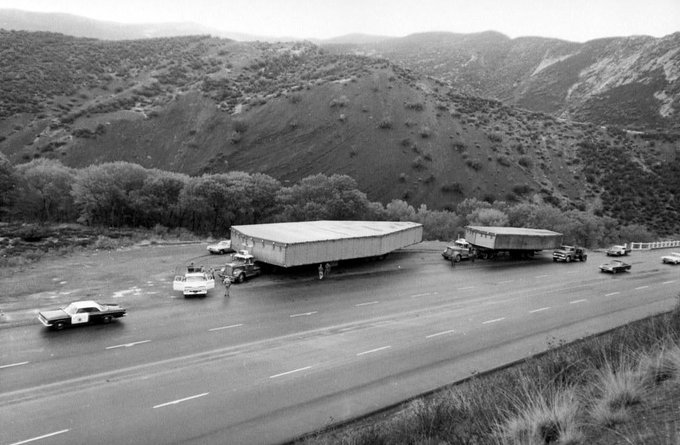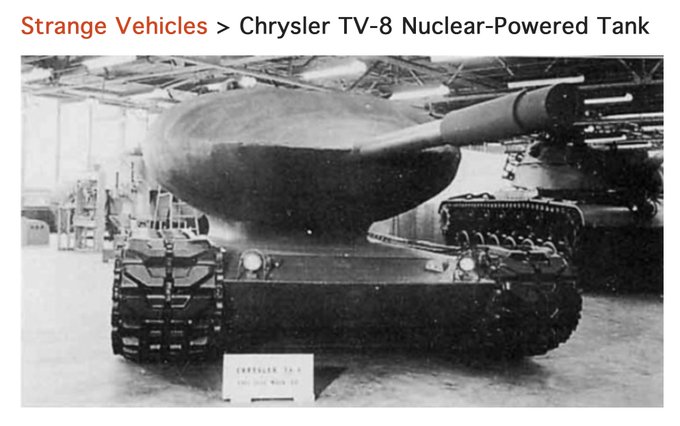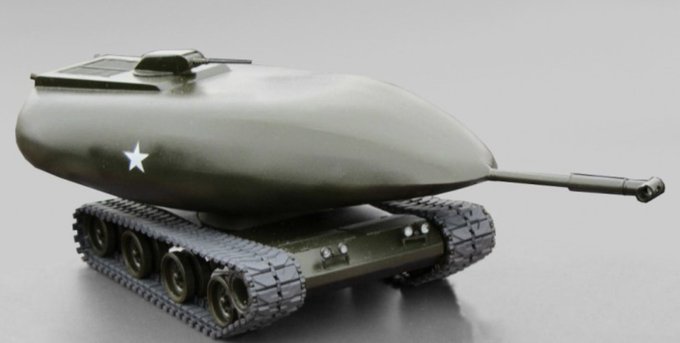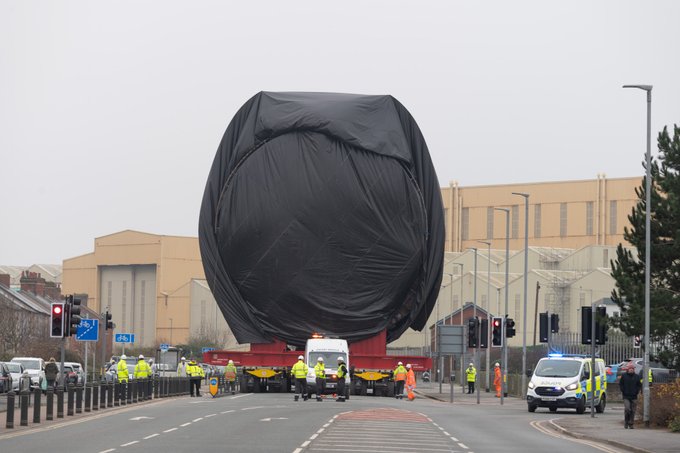Top Secret Military Inventions Revealed

August 20, 2023
•18 min read
Let's unveil some of the most top secret military inventions ever!
War is big business, and countless incredible technological marvels have been devised on behalf of this controversial industry. Understandably, the development of these game-changing weapons has to be kept a super secret. So, from nuclear-powered tanks to covert heart attack guns, here are some of the most unbelievable top-secret military weapons revealed!
Telepathic Ray Guns
It might sound like a sci-fi plot but a US official once demanded secretive research be carried out into telepathic ray guns. A declassified US Army report from 1998 revealed that at one point the CIA was considering utilizing a selection of energy weapons capable of disorienting targets, creating artificial fevers, and even beaming voices into people’s heads.
While some of these insane weapons stayed purely conceptual, others were actually tested! The wildest was something akin to a telepathic ray gun. Essentially, when fired at someone, it could make them hear things that weren’t audible to anybody else.

V3 Supergun
Throughout WW2, Allied and Axis forces decimated each other’s cities with air raids. But as the war raged on, Germany wanted a new, more effective way to strike directly at the heart of London, without the British knowing what was coming. Their solution was the enormous, 430-foot-long mega cannon known as the V-3.

SR-71 Blackbird
From the end of WW2 through until 1991, the US and Russia were locked in a battle of conflicting ideologies known as the Cold War. Though not a war in the traditional sense, it was a time of great paranoia, with both sides constantly trying to develop new ways of spying on one other. US manufacturer Lockheed Martin had a solution: the SR-71 Blackbird.

During the Blackbird’s development in the 1960s, Lockheed needed a way to transport the beast from its factory in California all the way to the test site in Area 51 without revealing what they were moving. They set up a fake delivery company called Roadrunner Internationale! Disguised CIA and Air Force operatives covered the humongous cargo from prying eyes and drove it some 250 miles cross country and nobody was any the wiser. Sounds like something out of a James Bond flick, but amazingly it’s all true! Though, it is a little strange that a truck this big didn’t draw any suspicion. These days it’d be all over Twitter in an hour!
This is how Lockheed Martin was transporting this ultra-secret A-12 OXCART—the precursor of the SR-71 Blackbird— developed under the supervision of the CIA. In a giganormous wooden box, that's how ow.ly/yt6b50v87zK
The Kiss of Death
The Cold War era saw the use of a huge variety of secret spy weaponry, many of which are so ingenious Inspector Gadget would’ve been proud to wield them! Meet the lipstick gun, known affectionately as The Kiss of Death.
This little device looked like an ordinary tube of lipstick, but it was actually a cleverly concealed firearm! When the lipstick’s case was swiveled in the right way, a single bullet would be fired from the barrel.You only got one shot, and it was wildly inaccurate beyond a couple of feet away, but if a covert assassin got close enough to their target, it was more than enough to do the trick. The makeup weapon was discovered in West Berlin at an American checkpoint in 1965. It was confiscated from a Soviet spy, though we can’t be sure who they were intending to use it on.Image data not availableCurrently, it’s safely housed in the International Spy Museum in Washington DC! Given the secretive nature of spy weapons, there’s no telling how many were manufactured, or how many were effectively used.Avrocar Flying Saucer
Back in 1952, the Canadian government funded a project to create a vertical take-off saucer capable of flying at supersonic speeds! Meet the Avrocar. It could float by utilizing an air cushion created by the exhaust of a single jet-powered rotor on the underside of the vehicle. So, this is a literal flying saucer. Or at least, it would’ve been.
Happy #PiDay from the Avro Canada VZ-9 Avrocar, a flying-saucer-like 1950s attempt at a VTOL aircraft. Never really “took off” so to speak as it was only stable up to a few feet off the ground #avgeek #PiDay2021 #314Day #HappyPiDay #UFOs 🎥 youtu.be/opD86VZSWpo
F-117 Nighthawk
From the studio that brought you the SR-71 Blackbird, it’s the next step in bizarre, sci-fi-looking stealth planes! Secretly introduced to the US Air Force in 1983, the F-117 Nighthawk used similar principles to the SR-71 to remain incognito. This time, however, its radar-reflective shape was so odd that experienced pilots didn’t even believe it could get airborne when they first saw it! They were wrong of course.
Although only capable of flying at a third of the speed of Lockheed’s SR-71, the Nighthawk was a very capable flyer, designed not as a reconnaissance plane but as an attack jet. As such, Nighthawk pilots didn’t participate in dogfights, they targeted ground forces with surprise stealth attacks.Gustav Rail Cannon
For all the ingenious breakthroughs made during the Second World War, there were a fair few duds such as the Gustav rail cannon. The beastly behemoth was an enormous, 155-foot-long cannon that weighed 1,490 tons and traveled along rail tracks, in theory creating transportable ordnance of immense power.
The gun was covertly conceived by German arms manufacturer Krupp before the war had even started, to assist German forces with a potential invasion of France. The only thing was, by the time they actually did invade France in 1940, the gun wasn’t ready. It was ready however to be used in the German invasion of Russia two years later. The only problem was, it turned out to be a complete logistical nightmare. The cannon was to be transported to Crimea in May 1942 for its first proper usage. Only, to move it, the whole thing needed to be dismantled, transported, then rebuilt again and that’s a whole lot of heavy parts.
Chrysler TV-8 Atomic Tank
After WW2 ended, everybody thought everything was going to be nuclear-powered. Cars, homes, and of course, weapons. So, in the 1950s, US automobile manufacturer Chrysler began designing an atomic tank, the Chrysler TV-8.
Those 1950s defense contractor employees were on a lot of amphetamines, right? diseno-art.com/encyclopedia/s…

Wonder Weapons
As we know, the Second World War didn’t go so well for the German Army. As the tide of battle turned against Germany, its increasingly desperate leadership scrambled to turn things around. One answer was the development of so-called “wonder weapons” or “Wunderwaffe”.
These weapons ranged from giant orbital space guns to stealth bombers and had varying levels of success. As you might’ve guessed, the space gun didn’t make it off the drawing board, but it was seriously considered.Though development was kept tightly under wraps for most weapons, the German propaganda machine proudly showed some off to boost an ailing domestic public’s morale. One Wunderwaffe that saw actual use in the field was the STG-44 rifle, the first true assault rifle ever made, and the inspiration for both the AK-47 and M16.But the STG is run-of-the-mill compared to some of the wonder weapons that were rumored to be in production. The most iconic of these is Die Glocke or the bell. There is not much information about it, other than it was apparently big and bell-shaped.Some say it was a UFO, others an anti-gravity machine, others still a time machine. Whatever the mysterious machine was, it’s rumored that the technology used to create it was traded to the US after the war in exchange for a captive German officer.
B-2 Spirit
As we’ve established, stealthy aircraft were all the rage during the Cold War. And in the early ‘80s, secretive plans were well underway for the B-2 Spirit, a US stealth bomber capable of dropping both conventional and nuclear explosives. In other words, an absolute unit.
So, it would’ve been pretty big news if the Soviets had caught the drift of it. In 1984 Thomas Cavanaugh, an aerospace engineer who was working on the bomber saw an opportunity for a big profit. At the moment, Cavanaugh was going through a tough divorce and was in a lot of debt. Needless to say, he needed a cash injection. So, in desperation, he managed to get in contact with some Soviet spies and offer over the secrets of the B-2 Spirit! Unfortunately for crafty Cavanaugh however, the “Soviet spies” he was dealing with turned out to be undercover FBI agents! He was promptly arrested and imprisoned for 16 years.
Moon Guns
The moon landing in 1969 was the culmination of an epic space race between the USA and Russia to essentially prove who had the biggest rocket. But what if both sides had reached the moon at the same time and things had gotten tense?
The Pentagon had a top-secret plan for that: Moon guns! A totally real branch of the US Army called the Future Weapons Office spent the ‘50s and ‘60s conceiving a series of weapons that could be used to battle the communists for control of the moon! As conventional guns wouldn’t be very useful in space.
The Sea Shadow
After the massive success of the Nighthawk jet, Lockheed Martin set their sights on using the same stealth tech on different things. The goal was to apply the stealth principles of the Nighthawk to a boat, which they called the Sea Shadow.
A great moment for teams delivering the Dreadnought programme at our Submarines business in Cumbria. The first pressure hull unit for Boat 1 has been transported to the Devonshire Dock Hall in Barrow for outfitting before being integrated into the finished submarine.
CIA's Heart Attack Gun
Back in the 1970s, the US public’s faith in their government was at a historic low point. President Nixon had just been found guilty of corruption, and Congress had been forced to investigate America’s intelligence agencies. That's when they found something utterly insane: A modified Colt M1911, aka, a CIA heart attack gun.

Hellfire R9X Missile: The Ninja Bomb
Next in the “super wacky weapon catalog” is the US military’s latest and greatest the R9X missile. Also known as “The Ninja Bomb,” this thing is absolutely crazy. Unlike most missiles, the R9X doesn’t actually explode. So, what is the point?
When the missile is about to make an impact with its target, six massive metal blades fold out of it, like some enormous, angry Swiss army knife. The idea is that this unconventional weapon will land directly on top of its target and get to work, without any collateral damage or unnecessary casualties.As recently as August 2022, President Joe Biden announced the removal of a number one operative in Afghanistan and it turns out, the then-classified R9X was responsible! It may sound like something out of Itchy and Scratchy, but it definitely seems effective!
CIA Weaponizing Lightning
In 1967, a US scientist wrote to the CIA with a seemingly bonkers idea, what if we could control lightning? Rather than throw the letter straight into the trash, the CIA genuinely considered the logicalities of harnessing lightning storms as deadly weapons.
The core principle was very basic. Lightning is formed of electricity, which is attracted to metal. So, by unfurling long lines of metal wire from an aircraft, the CIA hoped the wires would attract lightning, manipulating its path and sending it wherever the US commanded.





























